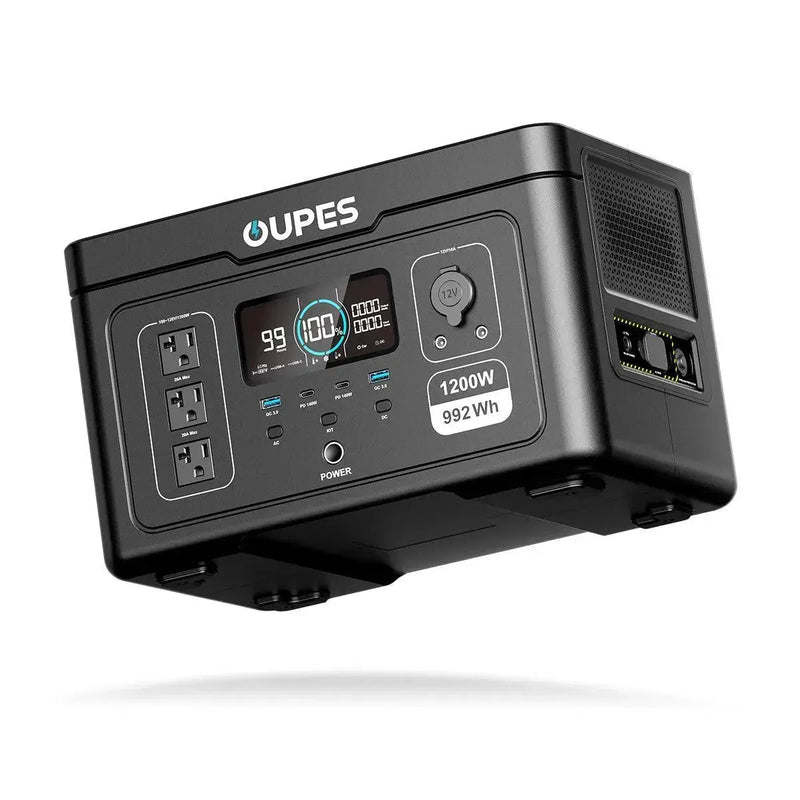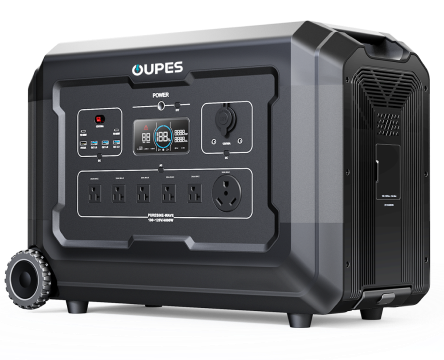
Imagine waking up to the gentle rustle of leaves, the scent of pine in the air, and the satisfaction of knowing your RV is fully powered without relying on a noisy gas generator or being plugged into a crowded campground. Solar generators have revolutionized RV living, offering clean, quiet, and convenient energy wherever the road takes you. But if you're wondering, "How big of a solar generator do I need for my RV?" you're not alone—getting the size right is crucial for ensuring a smooth and stress-free adventure.
In this article, we’ll break down everything you need to know about sizing a solar generator for RV use. From calculating your power needs to understanding generator specifications and planning for cloudy days, this guide is packed with practical advice for first-timers and seasoned RVers alike.
Assessing Your RV’s Power Requirements
Before you can choose the right size solar generator, you need a clear picture of your energy consumption. RVs can vary widely in terms of the appliances and devices they carry, so a one-size-fits-all approach won’t work. Instead, you’ll need to do a power audit to determine your unique needs.
Start by listing every appliance and electronic device you plan to use. This includes lights, refrigerators, microwaves, coffee makers, fans, TVs, laptops, and phone chargers. For each item, note its wattage and the estimated number of hours you’ll use it per day. Multiply wattage by usage hours to find each item’s daily watt-hour (Wh) requirement.
For example, a 12V fridge using 60 watts for 10 hours per day consumes 600Wh. Add up all your appliances to get the total daily energy demand. Be sure to include overhead items like water pumps and air conditioning systems, which may cycle on and off unpredictably but still draw significant power over time.
It’s also smart to include a safety buffer—typically 20–30%—to accommodate power surges or changes in your usage habits. If your estimated need is 1,500Wh per day, plan for at least 1,800–2,000Wh to ensure reliability, especially during unexpected weather conditions or emergencies.
Knowing your power requirements sets the foundation for everything else. Once you’ve calculated how much energy you need per day, you can move on to selecting a solar generator that’s capable of meeting—or exceeding—those demands consistently.
Understanding Solar Generator Specifications
Solar generators come in a wide range of capacities, from compact models designed for phone charging to large units capable of powering an entire RV. To choose the right one, it’s essential to understand the key specifications and how they relate to your energy needs.
One of the most important specs is battery capacity, typically measured in watt-hours (Wh). This tells you how much energy the generator can store and deliver before needing a recharge. For RV use, a solar generator with at least 1,000Wh is generally considered the minimum for basic off-grid living, while 2,000–3,000Wh units offer more flexibility for running high-wattage appliances like microwaves or coffee makers.
Another key spec is inverter capacity, measured in watts (W). The inverter determines how much power the generator can deliver at one time. A generator with a 2,000W inverter can power a single appliance that draws up to 2,000W or multiple smaller devices that total that load. If you plan to run air conditioners or electric cooktops, you'll need a generator with a high inverter capacity to prevent overload.
Solar input capacity is another important consideration. This determines how quickly you can recharge the generator using solar panels. A higher solar input means faster recharging, which is crucial if you rely on solar as your primary charging source. Look for generators with MPPT (Maximum Power Point Tracking) charge controllers, which are more efficient in harnessing solar energy.
Other helpful features to consider include multiple AC and DC outputs, USB ports, wireless monitoring apps, and expandable battery options. These conveniences can greatly enhance the user experience, especially during extended trips or full-time RV living.
Matching Generator Size to Your RV Lifestyle
The ideal solar generator size for your RV depends not only on your energy needs but also on your lifestyle and travel habits. Full-time RVers, weekend adventurers, and occasional boondockers will all require different setups to stay comfortable and powered up.
If you’re a minimalist camper who mostly uses lights, a fan, and a few USB devices, a compact solar generator in the 500–1,000Wh range may suffice. These smaller units are lightweight, easy to carry, and quick to recharge—perfect for short trips or as a backup system for occasional dry camping.
For moderate users who run a small fridge, coffee maker, laptop, and TV, a mid-sized unit between 1,500–2,500Wh is often ideal. These generators strike a balance between portability and power capacity, giving you enough stored energy to get through a typical day without worry. Look for models that support solar expansion, so you can add more panels if needed.
If you live in your RV full time or plan extended off-grid trips, a large generator of 3,000Wh or more is recommended. These high-capacity units can handle the demands of multiple appliances, provide longer runtime, and keep your lifestyle uninterrupted even during cloudy weather. You may also want a dual battery setup or the ability to chain additional batteries for added capacity.
Additionally, think about where and how you’ll use your generator. Will you be camping in the desert with plenty of sun or the Pacific Northwest with frequent overcast skies? The more you understand your travel patterns and personal energy habits, the better you’ll be able to choose a system that keeps up with your adventures.
Factoring in Recharging Options and Efficiency
How you recharge your solar generator is just as important as its capacity. A large battery bank won’t be useful if you can’t replenish it efficiently. Solar, shore power, and vehicle charging are the main options, and each has its own advantages and limitations.
Solar charging is the most popular and eco-friendly method. However, the effectiveness depends on your panel wattage, location, angle, and sun exposure. For example, a 200W solar panel might generate 800–1,000Wh on a sunny day, which is enough to recharge a mid-size solar generator partially. To keep up with daily energy use, you may need 400W or more of solar capacity. Consider portable foldable panels for convenience or rooftop installations for a permanent setup.
Some solar generators also allow AC wall charging (shore power), which is useful when you’re at a campground or have access to external electricity. This method is often the fastest and most reliable, especially when combined with solar charging.
DC charging via your vehicle’s alternator is another common option, but it’s typically slower and may not be suitable as your sole charging method. However, it can be a good supplementary source while driving between campsites.
Efficiency plays a major role in generator performance. Higher-efficiency inverters and MPPT charge controllers make a noticeable difference in power availability and charging times. When shopping, look for brands and models known for their efficient power management systems to get the most out of your generator and solar panels.
Ultimately, your recharging strategy should match your lifestyle. If you’re boondocking frequently, invest in larger solar arrays and a generator that supports fast solar input. If you mix off-grid with campground stays, ensure your system can recharge via shore power quickly. Flexibility is key to ensuring your generator keeps you powered up in all scenarios.
Planning for the Unexpected and Scaling Up
Even the most carefully planned solar setup can encounter challenges. Weather changes, increased power needs, or system inefficiencies may lead to shortfalls. That’s why planning for the unexpected is essential when determining the size of your solar generator.
One strategy is to start with a scalable system. Many solar generators allow for expandable batteries or chaining multiple units together. This flexibility lets you start with a smaller investment and scale up as your power needs evolve or your confidence grows in managing an off-grid setup.
Another tip is to always carry backup charging solutions. Portable gas generators, though less eco-friendly, can provide emergency power during prolonged cloudy periods. Some RVers also use dual-fuel generators that can switch between gas and propane, offering additional versatility.
Monitoring tools are also invaluable. Many solar generators come with companion apps or display panels that show battery status, input/output levels, and estimated runtime. Keeping an eye on this data allows you to adjust usage patterns or prioritize essential devices when power is low.
Additionally, seasonal planning can help. Summer trips may require more cooling power (fans or portable AC units), while winter trips might need electric blankets or heaters. Being aware of these variations allows you to size your system accordingly or adjust your travel plans based on energy availability.
Ultimately, the best solar generator for your RV isn’t just about meeting your current needs—it’s about preparing for future ones. A reliable, well-sized system offers the freedom to travel wherever your heart desires without sacrificing comfort, convenience, or peace of mind.
Choosing the right solar generator for your RV is a decision that requires careful thought, planning, and a solid understanding of your energy usage. From calculating your power requirements to evaluating generator specs and factoring in recharging methods, each step plays a crucial role in ensuring your system works efficiently and reliably.
Whether you’re a weekend camper or a full-time RVer, investing in the right solar generator brings freedom and flexibility to your travels. With the right setup, you can embrace off-grid living with confidence, knowing that you’ll always have the power you need—no matter where the road takes you.




























